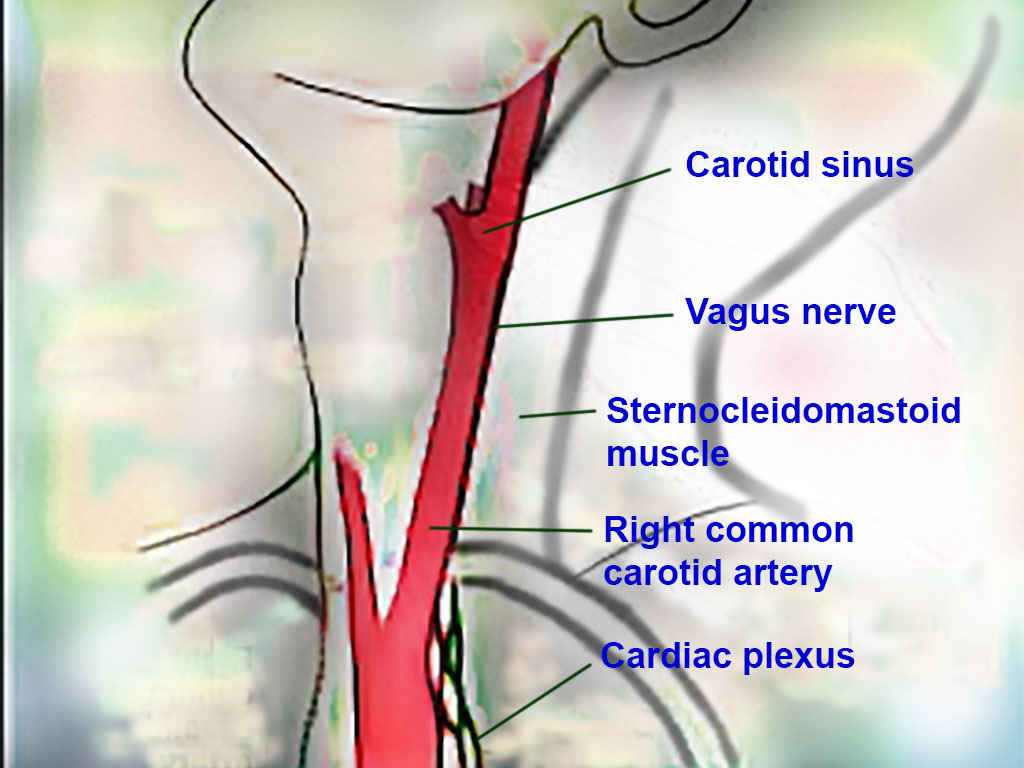[1]
Kikuta S, Iwanaga J, Kusukawa J, Tubbs RS. Carotid Sinus Nerve: A Comprehensive Review of Its Anatomy, Variations, Pathology, and Clinical Applications. World neurosurgery. 2019 Jul:127():370-374. doi: 10.1016/j.wneu.2019.04.064. Epub 2019 Apr 14
[PubMed PMID: 30995553]
[2]
Porzionato A, Macchi V, Stecco C, De Caro R. The Carotid Sinus Nerve-Structure, Function, and Clinical Implications. Anatomical record (Hoboken, N.J. : 2007). 2019 Apr:302(4):575-587. doi: 10.1002/ar.23829. Epub 2018 May 2
[PubMed PMID: 29663677]
[4]
Kau T, Sinzig M, Gasser J, Lesnik G, Rabitsch E, Celedin S, Eicher W, Illiasch H, Hausegger KA. Aortic development and anomalies. Seminars in interventional radiology. 2007 Jun:24(2):141-52. doi: 10.1055/s-2007-980040. Epub
[PubMed PMID: 21326792]
[5]
Seong J, Jeong W, Smith N, Towner RA. Hemodynamic effects of long-term morphological changes in the human carotid sinus. Journal of biomechanics. 2015 Apr 13:48(6):956-62. doi: 10.1016/j.jbiomech.2015.02.009. Epub 2015 Feb 12
[PubMed PMID: 25702250]
[6]
Seong J, Lieber BB, Wakhloo AK. Morphological age-dependent development of the human carotid bifurcation. Journal of biomechanics. 2005 Mar:38(3):453-65
[PubMed PMID: 15652543]
[7]
Williams JK, Orgren KI, Armstrong ML, Heistad DD. Vasa vasorum in the carotid sinus of atherosclerotic monkeys: implications for baroreceptor function. Atherosclerosis. 1989 Jul:78(1):25-32
[PubMed PMID: 2757684]
[8]
Clapham R, O'Sullivan E, Weller RO, Carare RO. Cervical lymph nodes are found in direct relationship with the internal carotid artery: significance for the lymphatic drainage of the brain. Clinical anatomy (New York, N.Y.). 2010 Jan:23(1):43-7. doi: 10.1002/ca.20887. Epub
[PubMed PMID: 19918869]
[10]
West CT, Brassett C, Gaunt ME. Variations in carotid sinus anatomy and their relevance to carotid interventions. Folia morphologica. 2018:77(4):693-697. doi: 10.5603/FM.a2018.0017. Epub 2018 Mar 3
[PubMed PMID: 29500893]
[11]
Michalinos A, Chatzimarkos M, Arkadopoulos N, Safioleas M, Troupis T. Anatomical Considerations on Surgical Anatomy of the Carotid Bifurcation. Anatomy research international. 2016:2016():6907472. doi: 10.1155/2016/6907472. Epub 2016 Mar 7
[PubMed PMID: 27047690]
[12]
Toorop RJ, Scheltinga MR, Moll FL, Bleys RL. Anatomy of the carotid sinus nerve and surgical implications in carotid sinus syndrome. Journal of vascular surgery. 2009 Jul:50(1):177-82. doi: 10.1016/j.jvs.2009.03.029. Epub
[PubMed PMID: 19563966]
[13]
Lloyd MG, Wakeling JM, Koehle MS, Drapala RJ, Claydon VE. Carotid sinus hypersensitivity: block of the sternocleidomastoid muscle does not affect responses to carotid sinus massage in healthy young adults. Physiological reports. 2017 Oct:5(19):. doi: 10.14814/phy2.13448. Epub 2017 Oct 16
[PubMed PMID: 29038360]
[14]
Moosavi V, Paymard M. Carotid sinus hypersensitivity. The Medical journal of Australia. 2019 Apr:210(6):257-257.e1. doi: 10.5694/mja2.50056. Epub 2019 Mar 4
[PubMed PMID: 30829401]
[15]
van den Brink RB, de Lange FJ. [Carotid sinus massage is not a benign intervention]. Nederlands tijdschrift voor geneeskunde. 2017:161():D1312
[PubMed PMID: 28378703]
[16]
Sutton R. Carotid sinus syndrome: Progress in understanding and management. Global cardiology science & practice. 2014:2014(2):1-8. doi: 10.5339/gcsp.2014.18. Epub 2014 Jun 18
[PubMed PMID: 25405171]
Level 3 (low-level) evidence
[17]
Tan MP, Newton JL, Reeve P, Murray A, Chadwick TJ, Parry SW. Results of carotid sinus massage in a tertiary referral unit--is carotid sinus syndrome still relevant? Age and ageing. 2009 Nov:38(6):680-6. doi: 10.1093/ageing/afp160. Epub 2009 Sep 7
[PubMed PMID: 19736287]
[18]
Kumar NP, Thomas A, Mudd P, Morris RO, Masud T. The usefulness of carotid sinus massage in different patient groups. Age and ageing. 2003 Nov:32(6):666-9
[PubMed PMID: 14600010]
[19]
Ulgen MS, Karadede A, Alan S, Toprak N. The value of hemodynamic changes induced by carotid sinus massage on the diagnosis of coronary artery disease. Angiology. 2001 Oct:52(10):703-9
[PubMed PMID: 11666135]


